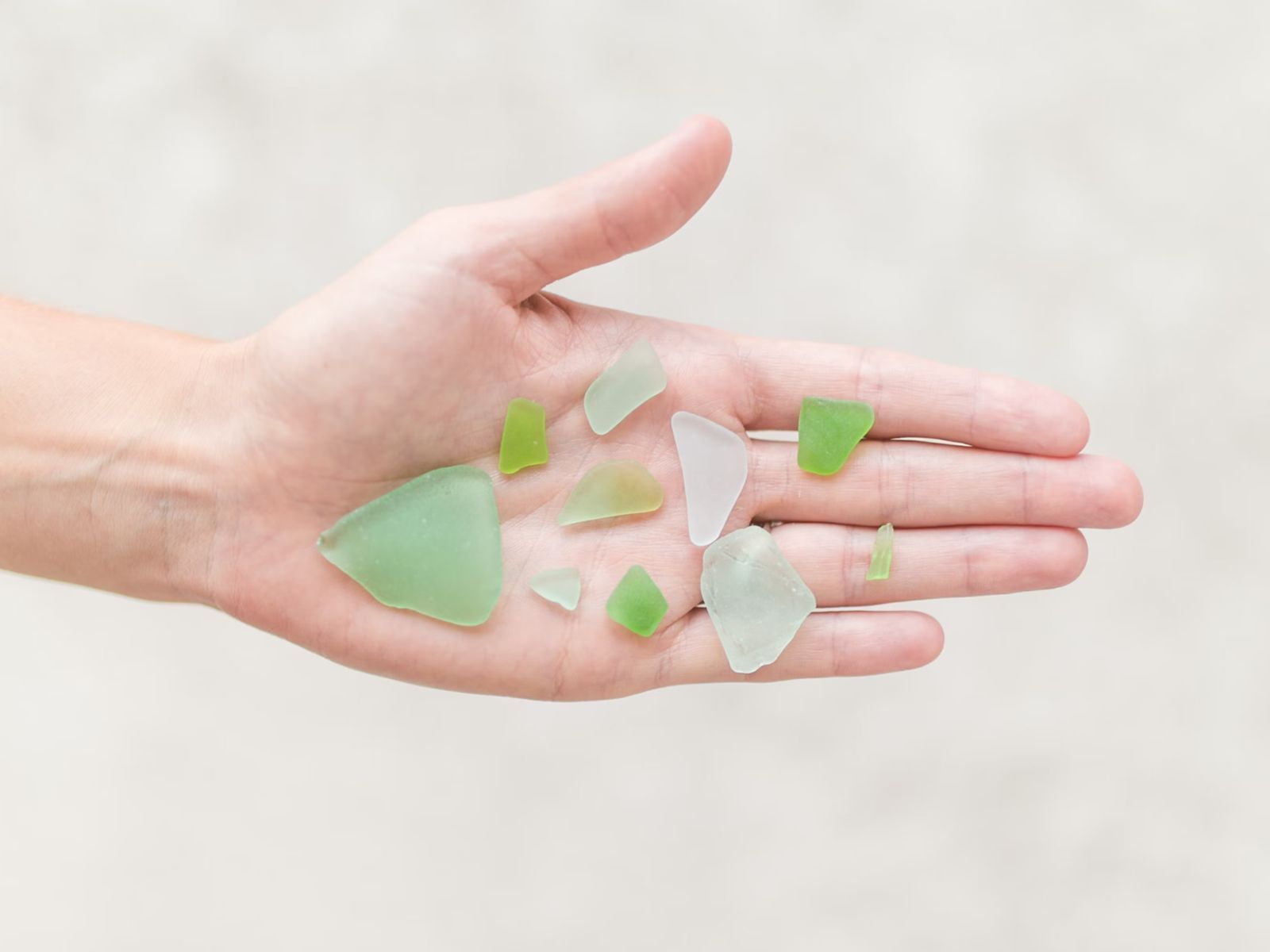Have you ever walked along the beach and found smooth, shiny, colorful rocks? These beautiful pieces are known as sea glass.
The naturally occurring pieces begin as discarded pieces of glass, such as bottles, tableware, or pieces of household items from shipwrecks. The pieces are then weathered physically and chemically from the constant tumbling they do through the waves over an extended period.
There are a variety of colors that you can find with sea glass, but some are more rare than others. Rare sea glass is usually found in items that are not commonly found as debris around the ocean.
8. Pink Sea Glass
The subtle tint of pink sea glass is a thing of beauty, and also one of the rare sea glass colors with a frequency of 1 in 3,000 to 4,000. During the Depression, glassmakers upped their game with pressed glass to create beautiful colors from ambers to pinks, making them pretty common.
Most of the pink glass that you could come across is back from that period since it was common to have corals and pinks for dinnerware. Due to the colored glass being made during the Depression, pink sea glass is seen as pretty flat since the glass was thin.
Related: Expensive and Rare Teas of the World
7. Teal Sea Glass
Teal is another rare sea glass color, with a frequency of 1 in 4,000 pieces. The make of turquoise color is difficult and isn’t common around households or businesses. There are a few glassware items with this color now, but before the 1950s, it wasn’t common to see the color.
Mostly it was used to hold things like ink, baking soda, or mineral water. Teal has a nice range of greenish-blue-gray to bright gray-blue-green, so you might find pieces of teal with varying shades that are closely related.
Check Out: Rare Starbucks Cups for Coffee Collectors
6. Gray Sea Glass
Gray sea glass might seem underwhelming at first, but once you see the light-toned glass, you’ll understand the beauty behind it. With as little as a 1 in 5,000 chance of finding this glass, gray is an incredibly rare sea glass color.
The balance of white and black makes this glass pretty rare, as it’s hard to achieve the perfect combination for this beautiful color. This color is commonly from contemporary items like tinted automobile glass, television screens, and household items that are pressed into patterns.
Read More: Pieces of Rare Candy You May Never Taste
5. Black Sea Glass
Black sea glass was common with alcohol containers to help prevent the sun’s UV rays from souring the mixture. But even so, black is one of the many colors that are rare to find, with a frequency of 1 in 5,000 pieces.
The usage usually had thicker containers with heavy, durable handles, which created chances of finding large pieces of this glass. The main reason it’s pretty uncommon to find black sea glass is the lack of black glass production. If you come across the colored glass, it most likely pre-dates the 1900s.
4. Yellow Sea Glass
The orange, red, and yellow family are some of the most rare sea glass colors that you can come across. Yellow in particular has a frequency of being found 1 in 7,500 pieces, which is a pretty slim chance.
The yellow hue of the glass comes from the mineral selenium, or manganese before World War I. The subtle tone of yellow came from art glass, stained glass, or Depression glass, and is of course very rare due to how little it’s used.
Related: Most Expensive Crocs and the Fashion Collaborations Behind Them
3. Red Sea Glass
Red is a rare sea glass color, with the frequency of finding in the range of 1 in 10,000 to 20,000. The rarity is based on just not having a lot of red glass around these days.
It’s not a common glass color and hasn’t been for a while. Anything red is usually plastic or aluminum. But when there is red sea glass, it’s usually from ship lights and other maritime lights.
Older shards might be from car tail lights or old-time lantern lenses. Several pieces might come from Anchor Hocking’s Royal Ruby Glass, which was first made in 1938 and was intended as fancy dinnerware.
2. Turquoise Sea Glass
With a frequency of 1 in 15,000, turquoise sea glass is rarer than red and is the rarest sea glass in the aqua and blue-hued glasses. It’s more vivid than aqua, a deeper blue, or an electric blue, and is incredibly hard to find.
Getting the color right for glass was incredibly hard, even more so in the late 1800s and early 1900s, so it’s not common to see it around. When glass workers did craft the beautiful color, you would often see it in vases, elaborate bottles, and seltzer bottles.
It’s more used in pressed glass rather than blow glass, which causes the turquoise sea glass to be found with subtle patterns on the surface. The majority of this color comes from England or the Caribbean from glass windows to filter sunlight.
1. The Rarest Sea Glass: Orange
The rarest color of sea glass is orange. Orange isn’t a frequent color when it comes to glass, so finding the shards or debris in the ocean is even harder to find.
The main origins for orange sea glass are auto warning lights, Persimmon glass from the 1940s, and Amberina glass from the 1930s. And while orange glass was pretty popular back in the day, it’s becoming harder and harder to find the hue at beaches. Carnival Glass is another form of orange sea glass but is considered “low-brow” to many due to its association with a rowdy crowd.
The frequency of finding these pieces is an average of 1 in 20,000. Oftentimes when sea glass hunters come across an orange-like piece, it’s often mistaken as orange but is actually amber sea glass.
